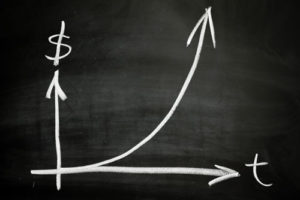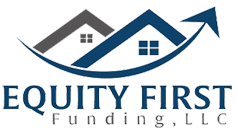We’ve previously written articles about the joys of passive income and how note investing gives you the cash flow without having the responsibility of playing the landlord.
One of the reasons for this is a little thing called compounding interest.
But, in many cases, it’s not so little.
In fact, compound interest makes your investments grow and grow and grow… Especially when it comes to compounding interest and note investing.
First off, “What is Compounding Interest?”
 There is a saying (often credited to Albert Einstein) that goes: “The most powerful force in the universe is compound interest.”
There is a saying (often credited to Albert Einstein) that goes: “The most powerful force in the universe is compound interest.”
So what makes it so special?
It’s the ability to earn interest on interest that compounds over time.
Simple Interest vs. Compounding Interest
To see the power of compounding interest it helps to compare it to simple interest.
With simple interest an investor just earns interest on the investment or principal.
Let’s say you invest $30,000 at 10% simple interest. The first year you would earn $3000 in interest.
The next year the same thing would happen. In ten years you would have the initial $30,000 investment plus $30,000 in interest ($3,000 per year x 10 years) for a total of $60,000.
When it comes to using compounding interest, not much changes the first year.
It’s the second year that things begin to increase.
Let’s look at the same investment with compounding interest. At the end of year one, you have the same $33,000, $3,000 more than your original investment amount. With simple interest, that would be reset at year two, with the investor collecting interest on just the $30,000 investment.
But, with compounding interest, an investor starts year two collecting interest on the $33,000. How much does that mean they have by the end of year two?
$33,000 x .10 = $3,300
$33,000 + $3,300 = $36,300.
That’s $300 more than if they just collected simple interest on their investment. Doesn’t seem like much? Well, it just keeps getting more significant over time.
In fact, by year 10, it’s an additional $17,812.28 of income on your investment ($77,812.28 total with compounding interest versus $60,000 with simple interest).
And no one said it had to be a yearly period. Instead of waiting a year to add the interest back to the principal, what about quarterly or even monthly?
Real Estate Notes and Compounding Interest
When purchasing real estate notes investors look at the remaining principal balance owed by the borrower along with the remaining payments due.
While the note itself normally amortizes (with the principal balance going down each month), a note investor can calculate their purchase price for the note using a monthly compounding period on a time value of money calculator.
Have questions about note investing? Looking for new investment properties or real estate notes to purchase? Contact Equity First Funding today!
